Features
Jaron Rykiss’s half-year spent on exciting “Kivunim” program in Israel cut short by COVID
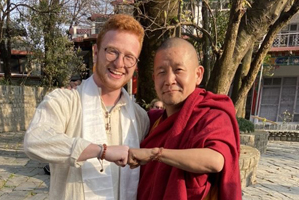
By BERNIE BELLAN
In 2019 Winnipegger Jaron Rykiss embarked on what, for almost any recent high school graduate, would probably be considered the adventure of a lifetime.
Jaron, who had just graduated from Gray Academy in the spring of last year (and doesn’t that seem like an eternity ago, even though it’s really only a little more than a year and a half ago?), had decided to enroll in a program that is probably not all that familiar to many Winnipeggers, known as “Kivunim”.
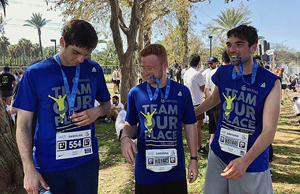
Kivunim, which means “directions” in English, is a program begun in 2006. Here is how the Kivunim website explains what it’s all about:
“KIVUNIM succeeds in delivering an immersive and transformative gap year experience of serious academic study, focused international travel and cross-cultural dialogue. These take place within the context of impressive intellectual and aesthetic exploration and growth that develops and deepens our students’ Jewish identity as engaged global citizens.
“KIVUNIM students forge a lifelong connection with Israel and the Jewish people through thoughtfully and intentionally-designed travel experiences that impart what other Jewish education programs can only envy: a nuanced and integrated understanding of Jewish civilization through sophisticated contact with the remarkable spectrum of religious traditions, cultures and world views among which the Jewish people grew throughout our 2,000-year Diaspora. Israel, our gap-year program home for the academic year, provides a challenging and surprisingly inspirational setting for appreciating the possibilities of Muslim-Jewish and Christian-Jewish co-existence and informs our broader international encounter with ‘the other’.”
Sounds pretty fantastic – right? And for any graduating high school student with the resources to participate in a program like this, it has to be considered a dream come true.
I spoke with Jaron Rykiss about his experience in Kivunim, which sadly for him and everyone else in the 2019-20 program, was cut short by COVID.
I began by asking Jaron how he heard about Kivunim in the first place?
Jaron explained that back in high school he was very involved with BBYO. Through BBYO he was exposed to a certain amount of international contact and realized “that there’s more to life than just Winnipeg”.
As graduation from Gray Academy was approaching Jaron “sat down with Avi Posen” (who was still in Winnipeg at that point, although in the fall of 2019 Avi himself made aliyah to Israel with his wife, Illana Minuk), and “we began talking about the possibility of a gap year” (the year between graduating from high school and entering a post-secondary institution).
After spending considerable time researching various programs Jaron came upon Kivunim which, he says, was perfect for someone like him – someone who didn’t have much experience outside of Winnipeg.
I asked Jaron whether he had ever been to Israel before?
He answered that he had – “twice” – once when he was nine, for a family occasion, and then again in 2017 when he was one of the students participating in the P2G (partnership together) program that Gray Academy has with Dancinger High School in Kiryat Shemonah, Israel. “That was really when I fell in love with the country,” he noted.
Fast forward to September 2019 and Jaron is in Jerusalem – “which is now my favourite city on the planet,” he said. There were 54 students in the program with Jaron – mostly from the U.S., but one other Canadian from Toronto as well.
“We all lived in a dormitory together – in the Mamillah area,” Jaron explained.
Under the original plan, Jaron said, he would have been in the program for eight and a half months, which would have taken him to the end of May.
As it was, he came back in March of this year – “exactly five months after I left”.
I asked Jaron at that point to describe what exactly he was studying during the program?
He answered: “The program goes to show you religion in other countries, so we spent the year studying Judaism, Islam…a Buddhist monk came to live with us for a couple weeks in Jerusalem and then when we got to India he showed us around.”
Which countries did Jaron actually visit as part of Kivunim? I asked.
Jaron said that the first month was spent in Jerusalem, followed by what was supposed to have been the first of several international trips.
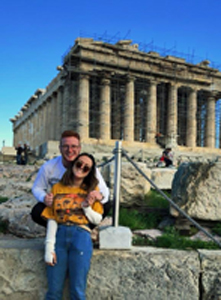
“We ended up going to Greece and Bulgaria for two weeks,” after which the group returned to Israel for a month and a half, then India, but trips to Spain, Portugal, Italy, Germany, Hungary and Morocco were all canceled due to the outbreak of COVID.
“We were supposed to end up in Morocco and meet the king there,” Jaron noted. “It’s too bad that never happened.”
(Jaron added that they were also supposed to visit Turkey at the same time as they visited Greece and Bulgaria, but that didn’t happen either. As he explained, “there were a lot of political issues” – what with the heightened civil unrest in Turkey at that time.)
What was the actual learning experience like? I wondered.
Jaron described the learning as “experiential”.
“While we were in Israel we would study the places we were going to visit,” Jaron observed, “then we would experience what we had just learned about – so it was a combination of classroom and experience.”
I was still uncertain, however, what the overall purpose of the program was – beyond exposing students to a wide variety of experiences.
According to its website, Kivunim aims to provide a “liberal arts” type of education: “The power of conceptual and intellectual integration is the ultimate (and all-to-often illusive) goal of a liberal arts education.
The website goes on to say:
“Why do we train our children in the liberal arts? It is not because these studies can grant someone virtue, but because they prepare the soul for accepting it.”
“KIVUNIM represents the beginning of a unique intellectual journey for our students and our staff and faculty. KIVUNIM succeeds in creating a thoughtful, comprehensive, and resilient intellectual foundation for our students and alumni.”
Here are the five courses taught to students in Kivunim. (There are no optional courses and all students must take the same five courses):
Civilization and Society: Homelands in Exile
Land, People, Ideas: The Challenges of Zionism
Hebrew Language and Literature
Arabic Language and Culture
Visual Learning – The Art of Seeing
A more detailed examination of each course gives a clearer understanding of just what it is that Kivunim is attempting to convey to students. Here, for instance, is an excerpt from the course outline of Land, People, Ideas: The Challenges of Zionism: “Here we seek to make the history of the Zionist movement come alive and allow KIVUNIM students to truly appreciate the capacity of the human being to become an historical actor: to make things happen. The course explores the growth of Pan-Arab nationalism and the specific development of Palestinian identity and nationalism. We encourage our students to imagine solutions while studying problems and to develop their sense of empowerment in glimpsing a future more positive than the past or today.”
If this all seems slightly airy-fairy, then I wondered how a program like this would be perceived by other institutions of higher learning – for instance, at a university here in Manitoba? After all, on its website Kivunim maintains that its courses will give students 30 academic credits, which would be equivalent to a normal year of study in an Arts program at a Manitoba university.
Jaron, who is now enrolled in an Arts program at the University of Manitoba, said that the university has not yet accepted for credit all the courses that he took in Israel.
Thus far, he has received credit for two of the courses: “Civilization and Society: Homelands in Exile”, and “Land, People, Ideas: The Challenges of Zionism”.
He noted though that he is being asked to take aptitude tests in both Hebrew and Arabic to determine whether the courses he took in those languages will be accepted for credit. As for the fifth course – “Visual Learning”, he explained that he is not expecting to obtain credit for that course, since it was more of a “photography” course than anything.
The problem, however, as Jaron noted during our conversation, is that due to COVID, so much of the university’s decision making is backed up that he doesn’t know how long it will be before he knows what the status of the two language courses that he took will be vis-à-vis receiving credit for them.
As far as his future studies go, Jaron added that he plans on majoring either in Political Studies or Philosophy, with his ultimate goal to get into law. (By the way, did I mention that Jaron’s grandfather is Jack London, about whom I have a review of his book elsewhere in this issue? As a disclaimer though, I want to explain that I contacted Jaron long before I knew that Jack had even written his memoir.)
One final aspect of the Kivunim program that hasn’t been mentioned yet in this article is the question of cost. I sent an email to the Kivunim program, asking for information as to the cost of the program. Here is the response I received:
“Our tuition is $55,000 which includes room and board, international travel, academics, a round trip from New York, etc. Tuition plus a small fee also includes 30 academic credits from Hebrew College (a full college year) accepted by most colleges in the U.S. and Canada. Every year we offer scholarships and interest free loans. We give about 40-50% of our students scholarship each year. Jaron’s year, 45% of students received a scholarship totaling approximately $375k.” (By the way, as one might expect, Kivunim is not being offered in person this year, although there is an online program.)
Features
Rob Reiner asked the big questions. His death leaves us searching for answers.

Can men and women just be friends? Can you be in the revenge business too long? Why don’t you just make 10 louder and have that be the top number on your amp?
All are questions Rob Reiner sought to answer. In the wake of his and his wife’s unexpected deaths, which are being investigated as homicides, it’s hard not to reel with questions of our own: How could someone so beloved come to such a senseless end? How can we account for such a staggering loss to the culture when it came so prematurely? How can we juggle that grief and our horror over the violent murder of Jews at an Australian beach, gathered to celebrate the first night of Hanukkah, and still light candles of our own?
The act of asking may be a way forward, just as Rob Reiner first emerged from sitcom stardom by making inquiries.
In This is Spinal Tap, his first feature, he played the role of Marty DiBergi, the in-universe director of the documentary about the misbegotten 1982 U.S. concert tour of the eponymous metal band. He was, in a sense, culminating the work of his father, Carl Reiner, who launched a classic comedy record as the interviewer of Mel Brooks’ 2,000 Year Old Man. DiBergi as played by Reiner was a reverential interlocutor — one might say a fanboy — but he did take time to query Nigel Tufnell as to why his amp went to 11. And, quoting a bad review, he asked “What day did the Lord create Spinal Tap, and couldn’t he have rested on that day too?”
But Reiner had larger questions to mull over. And in this capacity — not just his iconic scene at Katz’s Deli in When Harry Met Sally or the goblin Yiddishkeit of Miracle Max in The Princess Bride — he was a fundamentally Jewish director.
Stand By Me is a poignant meditation on death through the eyes of childhood — it asks what we remember and how those early experiences shape us. The Princess Bride is a storybook consideration of love — it wonders at the price of seeking or avenging it at all costs. A Few Good Men is a trenchant, cynical-for-Aaron Sorkin, inquest of abuse in the military — how can it happen in an atmosphere of discipline.
In his public life, Reiner was an activist. He asked how he could end cigarette smoking. He asked why gay couples couldn’t marry like straight ones. He asked what Russia may have had on President Trump. This fall, with the FCC’s crackdown on Jimmy Kimmel, he asked if he would soon be censored. He led with the Jewish question of how the world might be repaired.
Guttingly, in perhaps his most personal project, 2015’s Being Charlie, co-written by his son Nick he wondered how a parent can help a child struggling with addiction. (Nick was questioned by the LAPD concerning his parents’ deaths and was placed under arrest.)
Related
None of the questions had pat answers. Taken together, there’s scarcely a part of life that Reiner’s filmography overlooked, including the best way to end it, in 2007’s The Bucket List.
Judging by the longevity of his parents, both of whom lived into their 90s, it’s entirely possible Reiner had much more to ask of the world. That we won’t get to see another film by him, or spot him on the news weighing in on the latest democratic aberration, is hard to swallow.
Yet there is some small comfort in the note Reiner went out on. In October, he unveiled Spinal Tap II: The Beginning of the End, a valedictory moment in a long and celebrated career.
Reiner once again returned to the role of DiBergi. I saw a special prescreening with a live Q&A after the film. It was the day Charlie Kirk was assassinated. I half-expected Reiner to break character and address political violence — his previous film, God & Country, was a documentary on Christian Nationalism.
But Reiner never showed up — only Marty DiBergi, sitting with Nigel Tuffnell (Christopher Guest), David St. Hubbins (Michael McKean) and Derek Smalls (Harry Shearer) at Grauman’s Chinese Theater in Los Angeles. The interview was broadcast to theaters across the country, with viewer-submitted questions like “What, in fact, did the glove from Smell the Glove smell like?” (Minty.) And “Who was the inspiration for ‘Big Bottom?’” (Della Reese.)
Related
- Actor-Director Rob Reiner dies at 78
- Carl Reiner On Judaism, Atheism And The ‘Monster’ In The White House
- Mandy Patinkin On His Favorite ‘Princess Bride’ Quote
DiBergi had one question for the audience: “How did you feel about the film?”
The applause was rapturous, but DiBergi still couldn’t get over Nigel Tuffnell’s Marshall amp, which now stretched beyond 11 and into infinity.
“How can that be?” he asked. “How can you go to infinity? How loud is that?”
There’s no limit, Tuffnell assured him. “Why should there be a limit?”
Reiner, an artist of boundless curiosity and humanity, was limitless. His remit was to reason why. He’ll be impossible to replace, but in asking difficult questions, we can honor him.
The post Rob Reiner asked the big questions. His death leaves us searching for answers. appeared first on The Forward.
Features
A People and a Pulse: Jewish Voices in Jazz and Modern Music
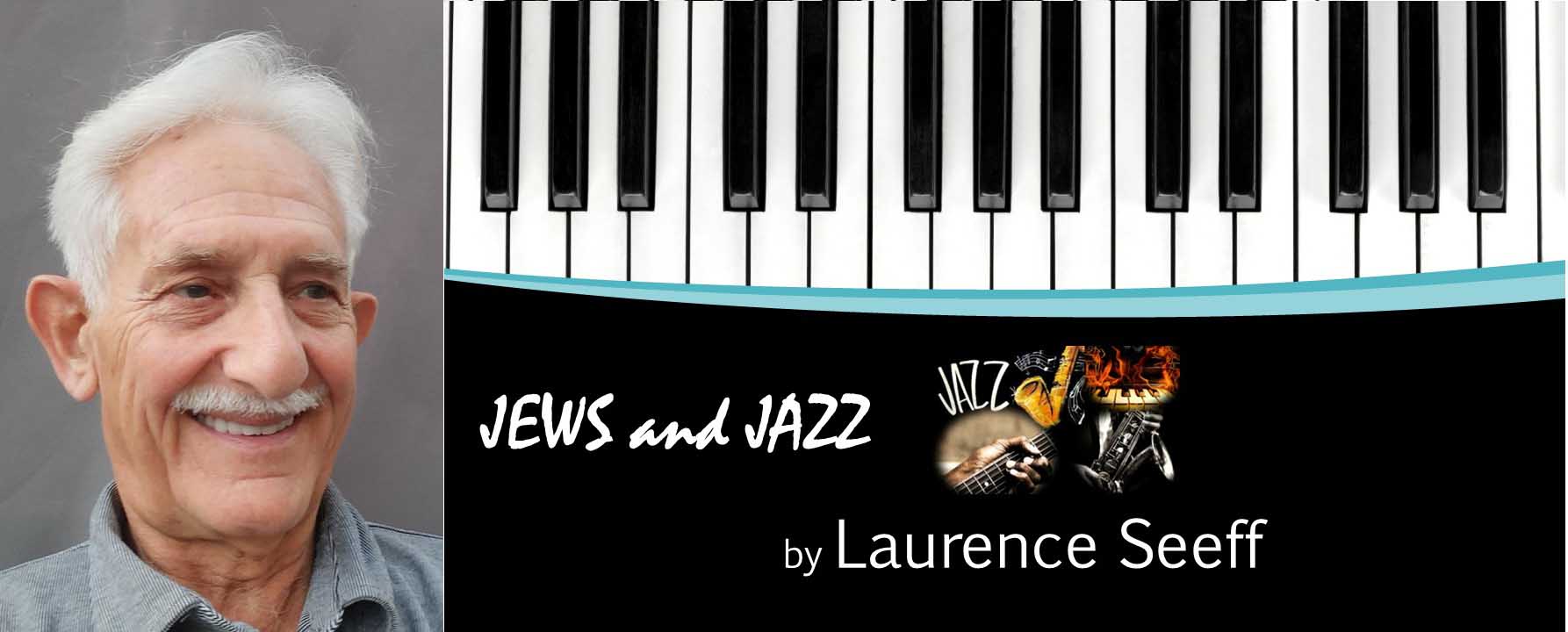
By MARTIN ZEILIG Jazz history is usually told through its most iconic names — Armstrong, Ellington, Parker, Davis — yet running alongside that familiar story is another, often under‑acknowledged one: the deep and enduring contribution of Jewish musicians, bandleaders, composers, and cultural intermediaries.
From the moment jazz emerged at the turn of the 20th century, Jews were not simply observers but active shapers of the music and the industry around it. Their influence — artistic, entrepreneurial, and cultural — has been both significant and, in many respects, disproportionately large. Jews and Jazz (171 pg. $18.75 US) a self‑published work by Laurence Seeff, brings this parallel narrative into sharp, affectionate focus.
Seeff is an ideal guide.
Born in London in 1951, he built a career that moved from statistics to energy policy in Paris, from financial markets at Bloomberg to corporate training in the City of London, all while writing poetry, songs, and humorous verse. Today he lives in Israel, where he continues to write, perform, learn Ivrit, and enjoy life with his large family. Through all these chapters runs a constant passion for jazz — a passion sparked more than fifty‑five years ago when he first heard Terry Lightfoot’s Jazzmen in a Bournemouth pub.
His writing blends clarity, humour, and genuine love for the music and the people who made it.
The musicians he profiles often came from immigrant families who brought with them the musical DNA of Eastern Europe — the cadences of synagogue chant, the urgency of klezmer, the cultural instinct for learning and artistic expression. When these sensibilities met the African American genius of early jazz, the result was a remarkable creative fusion.
Some figures, like Chico Marx, are better known for comedy than musicianship, yet Seeff reminds us that Chico was a serious pianist whose jazz‑inflected playing appeared in every Marx Brothers film and whose orchestra launched young talents like Mel Tormé. Others — Abe Lyman, Lew Stone, and Oscar Rabin — shaped the dance‑band era on both sides of the Atlantic.
Canadian readers will be pleased to find Morris “Moe” Koffman included as well: the Toronto‑born flautist and saxophonist whose “Swinging Shepherd Blues” became an international hit and whose long career at the CBC helped define Canadian jazz.
Seeff also highlights artists whose connection to jazz is more tangential but culturally revealing. Barbra Streisand, for example — a classmate and choir‑mate of Neil Diamond at Erasmus Hall High School — was never a natural jazz singer, yet her versatility allowed her to step into the idiom when she chose.
She opened for Miles Davis at the Village Vanguard in 1961 and, nearly half a century later, returned to the same club to promote Love Is the Answer, her collaboration with jazz pianist Diana Krall. Her contribution to jazz may be limited, but her stature as one of the greatest singers of all time is unquestioned.
Neil Diamond, too, appears in these pages.
Though not a jazz artist, he starred — with gusto, if not great acting finesse — in the 1980 remake of The Jazz Singer, 53 years after Al Jolson’s original. The film was not a success, nor was it truly a jazz picture, but its title and its star’s Jewish identity make it part of the cultural tapestry Seeff explores.
Diamond and Streisand recorded together only once, in 1978, on “You Don’t Bring Me Flowers,” a reminder of the long‑standing artistic ties between them.
Mel Tormé, by contrast, was deeply rooted in jazz. Nicknamed “The Velvet Fog,” he was a prodigy who sang professionally at age four, wrote his first hit at sixteen, drummed for Chico Marx, and recorded with Benny Goodman and Artie Shaw. Ethel Waters once said he was “the only white man who sings with the soul of a black man.” His story exemplifies the porous, collaborative nature of jazz.
Seeff also includes non‑Jewish figures whose lives intersected meaningfully with Jewish culture. Frank Sinatra — perhaps the greatest crooner of them all — was a steadfast supporter of Jewish causes, from protesting during the Holocaust to raising funds for Israel Bonds and the Hebrew University. His multiple visits to Israel, including a major concert in Jerusalem in 1975, underscore the depth of his connection.
Danny Kaye earns his place through his close work with Louis Armstrong, his pitch‑perfect scat singing, and his starring role in The Five Pennies, the biopic of jazz cornetist Red Nichols. Though not a jazz musician per se, his performances radiated a genuine feel for the music.
A later generation is represented by Harry Connick Jr., whose Jewish mother and New Orleans upbringing placed him at the crossroads of cultures. A prodigy who played publicly at age five, he went on to become one of the most successful jazz‑influenced vocalists of his era, with ten number‑one jazz albums.
Even Bob Dylan appears in Seeff’s mosaic — another reminder that Jewish creativity has touched every corner of modern music, sometimes directly through jazz, sometimes through the broader cultural currents that surround it.
Taken together, the concise portraits in Jews and Jazz form a lively, engaging mosaic — a celebration of creativity, resilience, and cross‑cultural exchange. They show how Jewish musicians helped carry jazz from vaudeville and dance halls into swing, bebop, cool jazz, pop, rock, and film music.
They remind us that jazz, at its heart, is a meeting place: a space where people of different backgrounds listen to one another, learn from one another, and create something larger than themselves.
For further information, contact the author at the following email address: laurenceseeff@yahoo.co.uk
Features
Jews in Strange Places
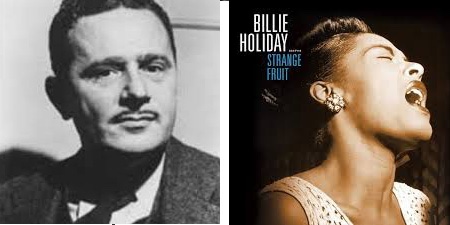
By DAVID TOPPER The Jewish contribution to 20th century popular music is well known. From Jerome Kern through to Stephen Sondheim, Jews played major roles as both composers and lyricists in the so-called Great American Songbook. (An exception is Cole Porter.) It continued in Musical Theatre throughout the rest of the century.
One very small piece of this story involves what Time magazine in the December 1999 issue called “the tune of the century.” First recorded sixty years before that, it is the powerful and haunting tune called “Strange Fruit,” which is about the lynching of black people in the southern USA. First sung by Billie Holiday in 1939, it became her signature tune.
So, why do I bring this up? Because there is a multi-layered Jewish connection to this song that is worth recalling, which may not be known to many readers.
Let’s start with the lyrics to “Strange Fruit,” which are the essence of this powerful piece:
Southern trees bear strange fruit,Blood on the leaves and blood at the root,Black bodies swinging in the southern breeze,Strange fruit hanging from the poplar trees.Pastoral scene of the gallant south,The bulging eyes and the twisted mouth,Scent of magnolias, sweet and fresh,Then the sudden smell of burning flesh.Here is fruit for the crows to pluck,For the rain to gather, for the wind to suck,For the sun to rot, for the trees to drop,Here is a strange and bitter crop.
Before becoming lyrics in a song, this poem stood alone as a potent statement about the lynchings still taking place throughout the American South at the time. The strong metaphorical imagery never explicitly mentions the lynching, which adds to the poetic power of this poem. Standing alone, I believe it’s an important protest verse from the 20th century.
Searching it on the internet, you may find the author listed as Lewis Allan. But that’s not his real name. “Lewis Allen” is the often-used pen name of Abel Meeropol, a Jewish High School teacher from the Bronx in New York. He and his wife, Anne (nee Shaffer), had two stillborn children with those names – a fact that adds a poignant element to this story.
The origin of the poem for Abel was a photograph he had seen of a lynching of black men in the South. I have seen such images, possibly even the one Abel saw: for example, a sepia photograph of two black men hanging from a long tree limb, and a large crowd of white people below (men, women and even children!), most seeming dressed in their Sunday best (some men with straw hats) looking up and gawking at the sight, some with smiles on their faces – as if attending a festive spectacle. Like Abel, I felt repelled by the picture: it turned my stomach. This communal display of horrific cruelty gave me a glimpse into Abel’s mind, and I understood how it compelled him to write about it. He thus wrote the poem, and it was published in a teacher’s magazine in 1937.
Being a songwriter too, in 1938 Abel added a melody and played it in a New York club he often attended. But here’s where this story’s documentation gets contradictory, depending upon who is recalling the events. The club owner knew Billie Holiday, and he showed the song to her. What her initial response was, we cannot know for sure. But we do know that in a relatively short time, she added it to her repertoire. It eventually became her signature tune. She initially sang it in public, but because of its popularity among her fans, there was pressure to record it too.
There were initial rejections from recording companies because of the controversial content. But Commodore Records took a chance and pressed the first recording in April 1939. This was the same year the movie “Gone with the Wind” came out; it was steeped in racial stereotyping. It was also sixteen years before Rosa Parks refused to give up her seat on a bus in Montgomery, Alabama.
As a record, the song obviously reached a large audience. Since the content was about racism, the song was seen as politically radical; not surprisingly, many radio stations banned it from the airwaves.
Furthermore, it’s also not surprising that Abel, a schoolteacher, was called to appear before a committee of New York lawmakers who were looking for communists in the schools. Possibly they were surprised to find that the poem and the song were written by a white man – and a Jew to boot. In particular, they wanted to know if he was paid by the Communist Party to write this song. He was not. And, in the end, they let him go. But shortly thereafter he quit his teaching job.
This took place in 1941 and was a precursor to the continued American obsession with communism into the 1950s, under Senator Joe McCarthy.
Indeed, that episode had an impact on Abel and Anne too. In 1953 Julius and Ethel Rosenberg were convicted of giving information about nuclear science to the Soviet Union, and they were the first married couple to be executed in the electric chair. They left two sons, Michael (age 10) and Robert (age 6). Apparently, immediate family members were reticent to get involved with the boys, possibly afraid of being accused of sympathizing with communism.
Enter Abel and Anne. Without a moment’s hesitation they stepped in, taking and raising the boys. As Michael and Robert Meeropol they eventually went on to become college professors – and naturally were active in social issues. Anne died in 1973. Abel died in 1986 in a Jewish nursing home in Massachusetts, after a slow decline into dementia. Long before that, Billie Holiday died in 1959, ravaged by the drug addition that took her life at forty-four years of age.
See why I called this a multi-layered Jewish story that’s worth telling?
To hear Billie Holiday singing “Strange Fruit” click here: Strange Fruit

